10 Art Collectors From The Past You Should Know
By Shira Wolfe
Some of the most spectacular museums and gallery collections in the world today are thanks to the incredible collections of some passionate art collectors from previous generations. We compiled a list of 10 of the most important and influential art collectors from the past every art lover should know.
Gertrude and Leo Stein
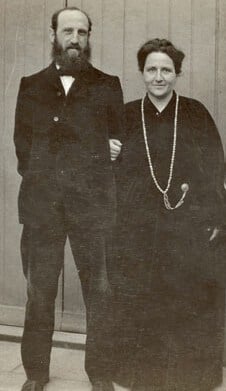
Gertrude and Leo Stein were the quintessential Americans in Paris during the Belle Époque. Gertrude moved to Paris in 1903, following her brother Leo, who had moved there to study art. Gertrude herself was a writer. At their home at 27 Rue de Fleurus, which soon became one of the most famous Paris salons, Gertrude and Leo Stein started an impressive art collection. Both had a great understanding of and intuition about art, and they would often buy new works right out of the studios of avant-garde artists. Their Saturday evening salons introduced visitors to the newest developments in art. Their salon was the place to see revolutionary and radical art. They collected works by, among others, Renoir, Delacroix, Degas, Manet, Toulouse-Lautrec, Matisse, Gauguin, and Cezanne. In 1905, the Steins met and befriended Picasso. They purchased his Young Girl With a Basket of Flowers, and Gertrude even posed for him. The Steins had a considerable influence on the artists they showcased in their salons and on the development of art market demand.
J. Paul Getty
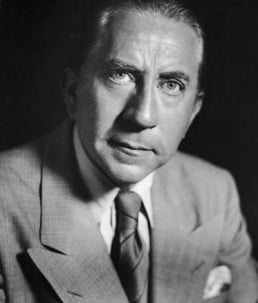
J. Paul Getty, an oil baron from Minnesota, started collecting European paintings right before the Second World War, since the prices had dropped dramatically due to the imminence of war. Getty liked taking risks and never wanted to follow the crowd. He particularly preferred Greek and Roman sculpture, paintings by Renaissance masters, and 18th century European furniture. He also collected Middle Eastern carpets and 20th century art. When he died, he left most of his estate to the J. Paul Getty Museum Trust. The Trust runs the J. Paul Getty Museum in Los Angeles, which instantly became one of the wealthiest art institutions in the world.
Peggy Guggenheim
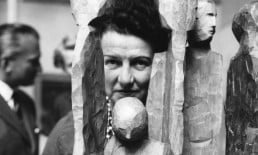
Peggy Guggenheim, the niece of Solomon R. Guggenheim, was an early 20th century socialite and bohemian who became one of the most famous art collectors in the ‘30s and ‘40s. Guggenheim’s excellent eye for art can be traced back to her family as well as to her close relationships with many avant-garde artists. Marcel Duchamp introduced her to the art world and many artists in Paris, and taught her about contemporary art. When the Second World War broke out, she bought one painting a day, which resulted in her impressive collection of works by Picasso, Ernst, Miró, Magritte, Man Ray, Dalí, Klee, Wolfgang Paalen, and Chagall. In 1949, she bought the Palazzo Venier dei Leoni on the Grand Canal in Venice, and established her collection there, which she presented to the public. Eventually, she donated her collection and the palazzo to the Solomon R. Guggenheim Foundation, which in 1980 opened the Peggy Guggenheim Collection.
Dorothy and Herbert Vogel
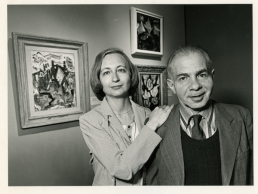
Dorothy and Herbert Vogel, the prom king and queen of P.S. 1 at the 1976 P.S. 1 benefit prom, are something of an art collecting legend. Both were state employees, living off less than fifty thousand dollars a year in New York City. And yet, they collected over 4000 works of contemporary art. Their secret lies in the fact that they had such a passion for contemporary art, had an excellent eye, and were bold in their purchases. They would frequently buy pieces that were unpopular at first, and later became worth millions. Artists in their collection include Richard Tuttle, Sol LeWitt, Jeanne-Claude and Christo.
Count Giuseppe Panza di Biumo
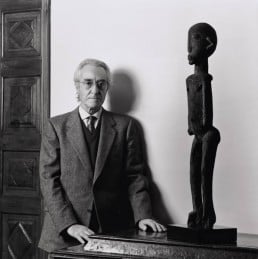
Giuseppe Panza di Biumo, self-taught in the area of art, began collecting with his wife Giovanna in 1956. His collection started with paintings by European Art Informel artists (Jean Fautrier and Antoni Tàpies) and American Abstract Expressionists (Franz Kline and Mark Rothko). He also became one of the first patrons of Pop Art, and later became enamored with Minimalist art, in particular collecting works by Robert Morris, Dan Flavin, Carl Andre, and Donald Judd. Panza’s collection between 1966 and 1976 soon became recognised as one the most important collections of American art of the ‘60s and ‘70s. In the early ‘90s, Panza sold and gifted over 350 Minimalist, Post-Minimalist, and Conceptual artworks to the Solomon R. Guggenheim Foundation, as such transforming the Guggenheim into the leading centre for American art from the ‘60s and ‘70s.
Gertrude Vanderbilt Whitney
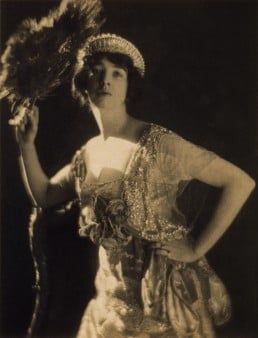
At the beginning of the 20th century, it was difficult for artists with new ideas to exhibit and sell their work in the United States. Gertrude Vanderbilt Whitney, a sculptor who was born into the prominent Vanderbilt family, recognised this struggle for artists and quickly became one of the leading patrons of American art until her death in 1942. She started purchasing and exhibiting art by living American artists whose works were often disregarded by traditional academies. In 1931, she opened the Whitney Museum of American Art, with a mission to focus exclusively on the art and artists of the United States. Her personal collection in 1931 amounted to approximately 600 works of art by artists such as Peggy Bacon, George Bellows, Stuart Davis, Charles Demuth, Mabel Dwight, Edward Hopper, Yasuo Kuniyoshi, Reginald Marsh, and John Sloan.
Doris Duke
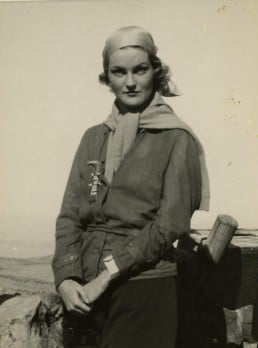
The only child of American tobacco baron James Duke, Doris Duke used her large fortune to travel around the world and pursue her passions, such as the arts and horticulture. She had a great love for the Middle East, Africa, and Southeast Asia, and filled her Shangri La mansion in Hawaii with Islamic art and architecture. She collected over 2500 pieces of Islamic art in her lifetime. Today, Shangri La is an impressive museum designed to introduce visitors to the world of Islamic art and architecture, including works of art from Spain, Morocco, Egypt, Syria, Iran, Central Asia, India, and parts of Southeast Asia.
Helene Kröller-Müller
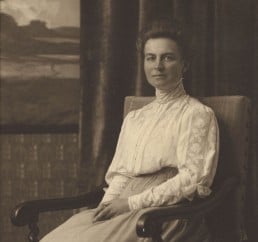
In the east of the Netherlands, in the middle of national park De Hoge Veluwe, lies the Kröller-Müller Museum, one of Europe’s most impressive sculpture gardens and private collections of 20th century art. The Kröller-Müller Museum is the life work of Helene Kröller-Müller, who, together with her husband Anton, collected nearly 11.500 works of art between 1907 and 1922. Her dream was to have a museum house, where she could share her love of modern art with others. In 1938, the Kröller-Müller Museum opened its doors to the public. The Kröller-Müllers were able to purchase their art with capital acquired by Anton Kröller, the director of Willem H. Müller & Co., a powerful international corporation. Helene Kröller-Müller’s personal favourite was Vincent van Gogh, and his works became the focal point of her collection. In her lifetime she purchased 91 paintings and 175 drawings by Van Gogh.
David Rockefeller
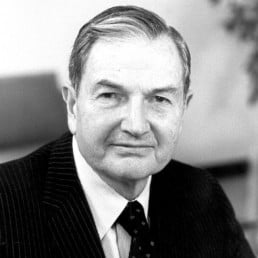
David Rockefeller, grandson of John D. Rockefeller, America’s first billionaire, put a great deal of his fortune towards his love for the arts. In doing so, he followed in his parents’ footsteps; his mother, Abby Aldrich Rockefeller, helped found New York’s Museum of Modern Art. David himself started collecting under the mentorship of MoMA founding director Alfred Barr, and amassed a collection of about 15.000 works in his lifetime. He continued to keep close ties with the MoMA, and donated numerous works by Cezanne, Gauguin, Matisse, and Picasso, as well as making a $100 million gift to the museum in 2005, on the occasion of his 100th birthday.
Isabella Stewart Gardner
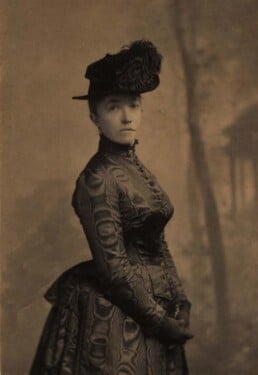
Isabella Stewart Gardner was well known in her time and thereafter for being an eccentric American collector of Fine European art throughout the 1890s until her death in 1924. But her fame has skyrocketed posthumously in the past 30 years after her museum (the Isabella Stewart Gardner Museum in Boston) was robbed of 13 paintings worth $500million in total, one of the most legendary heists in art history. Some of the
very best works from Rembrandt, Vermeer, Manet, and Degas were included in the haul. Vermeer’s The Concert, Rembrandt’s The Storm on the Sea of Galilee, and Degas’ La Sortie de Pesage were some of the notable works stolen, all of which have been missing to this day. The heist is not without its controversy, after 30 years of searching, little to no progress has been made on the case by the US’s Federal Bureau of Investigation. While the FBI did identify, the two robbers, the whereabouts of the missing masterpieces is a complete mystery. Even with 7 years of independent research, the full cooperation of the FBI, and every corner – except the black market – of the art world behind it, a recent Netflix documentary has come up short, with more questions than answers. Until solved, the missing masterpieces and the heist will invariably maintain Gardner’s position as one of the most famous art collectors. Until then, the frames of the missing masterpieces remain empty in the Isabella Stewart Gardner Museum.
Get your free copy of Artland Magazine
More than 60 pages interviews with insightful collectors.